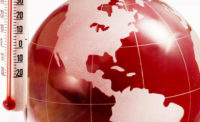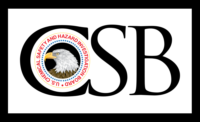Cosmic radiation endangers aircraft crews

Rude passengers and sleep deprivation from irregular hours aren’t the only work-related hazards that crew members of airplanes have to deal with.
They – along with passengers - are exposed to cosmic ionizing radiation on every flight, because of the altitudes at which they fly. Because crew members fly more frequently, they are more at risk from the health effects of the radiation than are passengers.
Cosmic ionizing radiation (or cosmic radiation) comes from outer space. A very small amount of this radiation reaches the earth.
Known health effects
The World Health Organization (WHO) International Agency for Research on Cancer (IARC) says that ionizing radiation causes cancer in humans. Ionizing radiation is also known to cause reproductive problems.
Most studies of radiation health effects have looked at groups with much higher radiation doses from different kinds of radiation (atomic bomb survivors; patients who received radiation therapy).
What is not known
The National Institute for Occupational Safety and Health (NIOSH) says the link between radiation and cancer and reproductive health issues like miscarriage and birth defects and occupational exposure has not been established. “If you are exposed to cosmic ionizing radiation and have these health problems, we can’t tell if it was caused by your work conditions or something else,” according to NIOSH. “We don’t know what levels of cosmic radiation are safe for every person.”
How much cosmic radiation are crewmembers exposed to?
The National Council on Radiation Protection and Measurements reported that aircrew have the largest average annual effective dose (3.07 mSv) of all US radiation-exposed workers. 1 Other estimates of annual aircrew cosmic radiation exposure range from 0.2 to 5 mSv per year.
To estimate the galactic cosmic radiation dose (not solar particle event dose) for a specific flight, visit the FAA CARI programExternal.
Are there exposure guidelines?
There are no official dose limits for aircrew in the United States, but there are national and international guidelines.
The International Commission on Radiological Protection (ICRP) considers aircrew to be exposed to cosmic radiation on their jobs. They recommend effective dose limits of 20 mSvExternal /year averaged over 5 years (that is, a total of 100 mSv in 5 years) for radiation workers and 1 mSv/year for the public. For pregnant radiation workers, the ICRP recommends a dose limit of 1 mSv throughout pregnancy. The National Council on Radiation Protection and Measurements has a 0.5 mSv recommended monthly radiation limit during pregnancy.
European Union member states require assessment of aircrew exposure when it is likely to be more than 1 mSv /year, and adjustment of work schedules so that no individual exceeds 6 mSv/year.
How can crewmembers reduce their exposure to cosmic radiation?
Bidding for a flight schedule to reduce cosmic radiation exposures is complicated, because reducing one exposure may increase another. Seniority, lifestyle, and personal issues also affect the ability to make these choices.
NIOSH recommends the following actions:
- Try to reduce your time working on very long flights, flights at high latitudes, or flights which fly over the poles. These are flight conditions or locations that tend to increase the amount of cosmic radiation the crewmembers are exposed to. You can calculate your usual cosmic radiation exposures. The FAA’s CARI program websiteExternal allows you to enter information to estimate your effective dose from galactic cosmic radiation (not solar particle events) for a flight.
- If you are pregnant or planning a pregnancy, it is important to consider your work exposures, including cosmic radiation. If you are pregnant and aware of an ongoing solar particle event when you are scheduled to fly you may want to consider trip-trading or other rescheduling actions if possible.
- For flight attendants, a NIOSH study found that exposure to 0.36 mSv or more of cosmic radiation in the first trimester may be linked to increased risk of miscarriage.
- Also, although flying through a solar particle event doesn’t happen often, a NIOSH and NASA study found that a pregnant flight attendant who flies through a solar particle event can receive more radiation than is recommended during pregnancy by national and international agencies.
Regarding solar particle events:
- NIOSH has estimated that pilots fly through about 6 solar particle events in an average 28-year career.
- Avoiding exposure to solar particle events is difficult because they often happen with little warning. You can find out whether a solar particle event is currently active through these sources:
- The National Aeronautics and Space Administration (NASA) Nowcast of Atmospheric Ionizing Radiation System (NAIRAS)External is being developed to report potentially harmful flight radiation levels to flight crews and passengers.
- NAIRAS: current radiation dose rate forecastExternal.
- A space weather appExternal for the iPhone offers current information on solar activity
- The National Oceanic and Atmospheric Administration (NOAA) Space Weather Prediction Center’s Aviation Community Dashboard includes a forecast for solar particle eventsExternal.
Reference
1 National Council on Radiation Protection and Measurements. Ionizing radiation exposure of the population of the United States. Report No. 160. Recommendations of the National Council on Radiation Protection and Measurements (NCRP).Bethesda, MD: National Council on Radiation Protection and Measurements, 2009.
Source: NIOSH
Looking for a reprint of this article?
From high-res PDFs to custom plaques, order your copy today!





